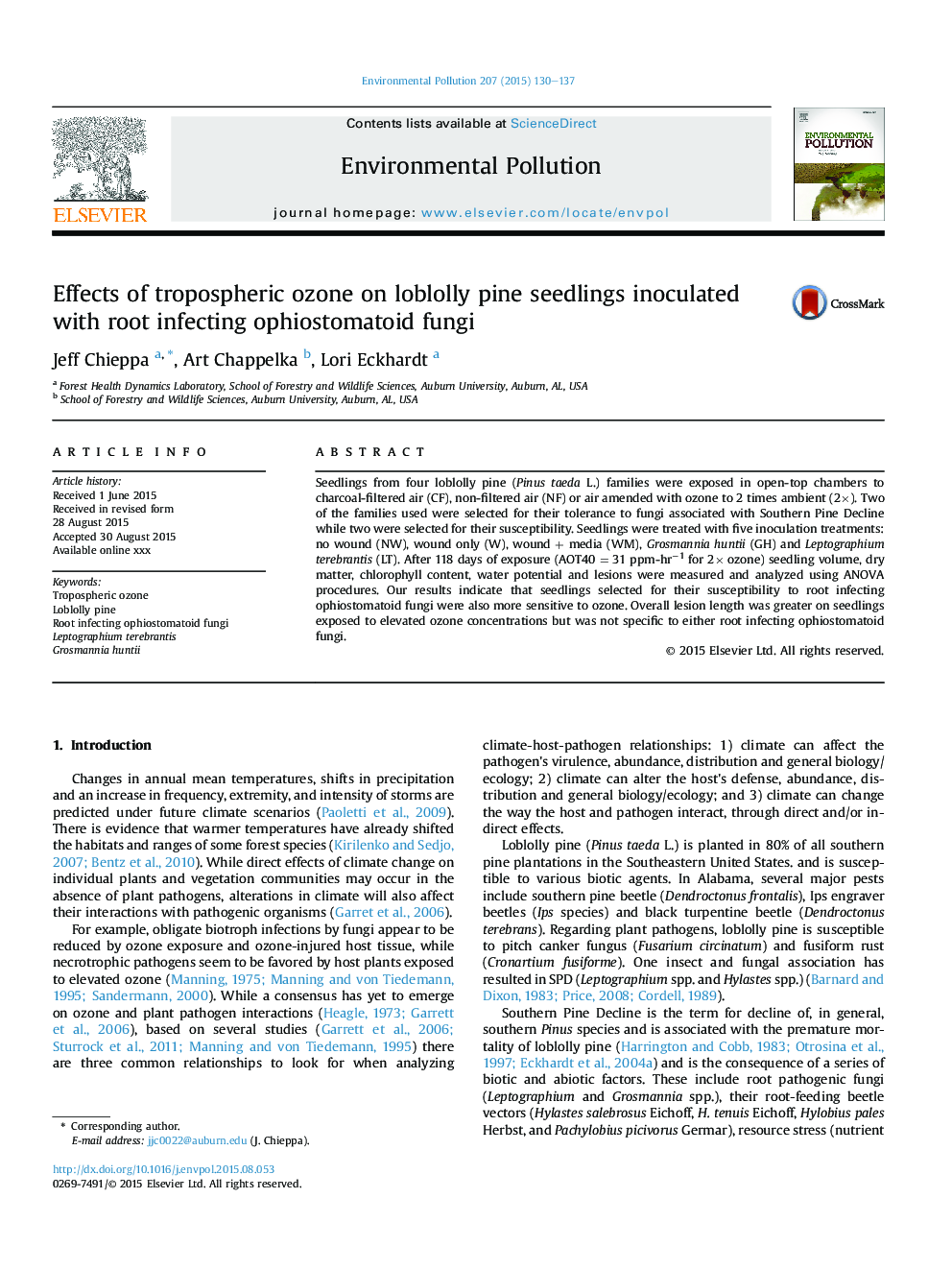| Article ID | Journal | Published Year | Pages | File Type |
|---|---|---|---|---|
| 6316138 | Environmental Pollution | 2015 | 8 Pages |
Abstract
Seedlings from four loblolly pine (Pinus taeda L.) families were exposed in open-top chambers to charcoal-filtered air (CF), non-filtered air (NF) or air amended with ozone to 2 times ambient (2Ã). Two of the families used were selected for their tolerance to fungi associated with Southern Pine Decline while two were selected for their susceptibility. Seedlings were treated with five inoculation treatments: no wound (NW), wound only (W), wound + media (WM), Grosmannia huntii (GH) and Leptographium terebrantis (LT). After 118 days of exposure (AOT40 = 31 ppm-hrâ1 for 2à ozone) seedling volume, dry matter, chlorophyll content, water potential and lesions were measured and analyzed using ANOVA procedures. Our results indicate that seedlings selected for their susceptibility to root infecting ophiostomatoid fungi were also more sensitive to ozone. Overall lesion length was greater on seedlings exposed to elevated ozone concentrations but was not specific to either root infecting ophiostomatoid fungi.
Keywords
Related Topics
Life Sciences
Environmental Science
Environmental Chemistry
Authors
Jeff Chieppa, Art Chappelka, Lori Eckhardt,
